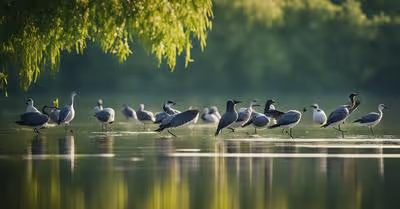
Key Takeaways
- Lakeside birding combines tranquility with the thrill of bird spotting.
- Sanctuaries offer an intimate glimpse of birdlife in natural habitats.
- Expert insights guide you to top-rated bird watching havens.
Birds chirping, wings flapping, the serenity of a lakeside setting – can life get any better?
Imagine unwinding beside a tranquil lake while binoculars rest in your hands, and before you, a vibrant array of birds swoops and soars.
Bird watching at lake sanctuaries offers unmatched opportunities to see nature's feathery marvels up close.
These sanctuaries, nestled by the shores of peaceful waters, are not just about the birds; they provide a retreat where you can reconnect with nature and admire avian wonders.
You're in for a real treat because we're showcasing wondrous spots where the air is filled with melodious birdcalls and the landscapes teem with biodiversity.
Our insights are based on established bird sanctuaries that have garnered praise from birding enthusiasts.
Nothing beats experience and hands-on knowledge—rest assured, our recommendations come from a place of genuine passion and meticulous research.
Bosque del Apache National Wildlife Refuge (New Mexico)
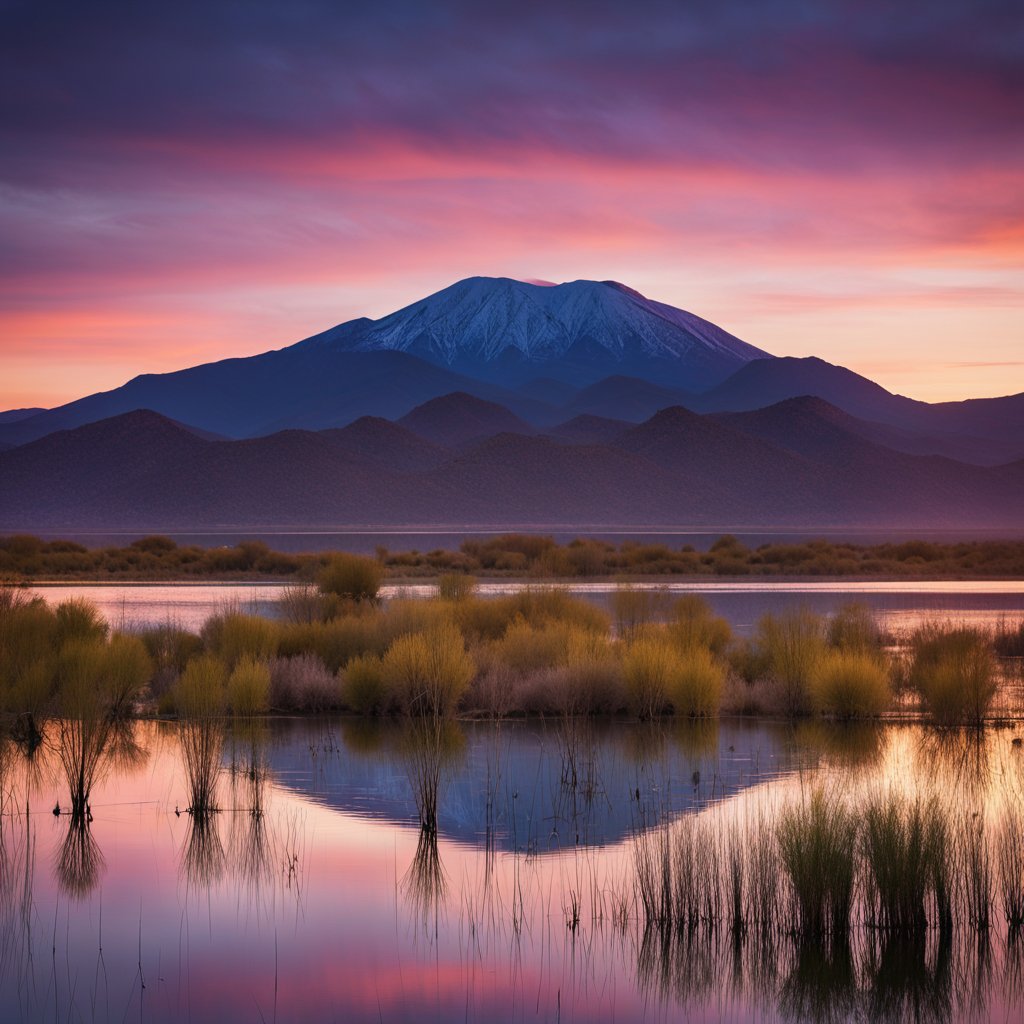
Ever wanted to witness a real-life feathered festival?
Head down to the Bosque del Apache National Wildlife Refuge in New Mexico and let your bird-watching adventure begin!
Imagine standing by the water's edge as tens of thousands of cranes, geese, and ducks grace the skies and waters around you.
Why's it so popular, you ask?
Well, this 57,331-acre sanctuary is a bird photographer's haven, especially from November to January when the Festival of the Cranes is in full swing.
You're not just a spectator here; you're part of a natural celebration!
Here's a quick bird's eye view:
Location: Situated near Socorro, nestled between the Chupadera and San Pascual Mountains.
Established: 1939
Known for:
Winter habitat for migrating waterfowl.
Over 50,000 Snow Geese and 15,000 Sandhill Cranes making a pit stop.
The refuge was established not just for fun but with a purpose – to become a key stopover for these winged travelers.
It's no wonder it has been a cherished spot since the winter chill of 1941 saw a mere 17 cranes.
The sanctuary now hosts impressive numbers, turning the area into a winter wonderland of sorts for bird enthusiasts like you!
Feeling the urge to grab your binoculars yet?
Just picture the sun rising over the lakes as you listen to the symphony of calls—a breathtaking spectacle.
Grab a friend, make a day of it, and see for yourself why the Bosque del Apache National Wildlife Refuge is a highlight on any birder's map.
Horicon Marsh (Wisconsin)
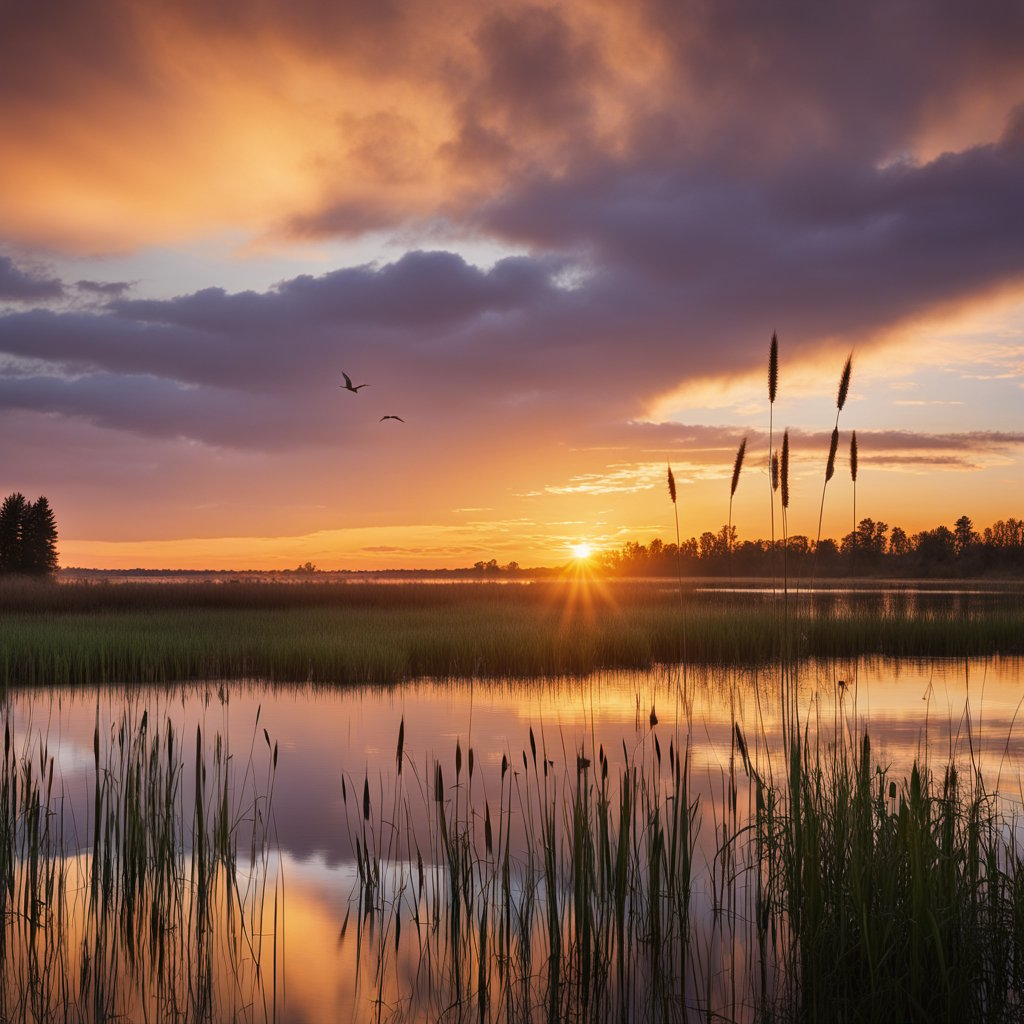
Have you heard of Horicon Marsh?
It's not just any wetland; it's the largest freshwater cattail marsh in the United States!
Picture this: you're surrounded by 33,000 acres of thriving, lush habitat that's just bustling with life, especially if you’re there during the spring or fall.
Why?
Well, it's a major stopover for a kaleidoscope of nearly 300 bird species!
- Spring and Fall Migration: 300,000 birds flock here, from the familiar honk of Canada geese to the elegance of tree swallows.
- Rare Sightings: Keep your binoculars ready for a glimpse of the majestic trumpeter swan.
Located just an hour northeast of Madison, Wisconsin, this sanctuary is split into state and federal wildlife refuges.
Here’s a tip: visiting during the annual Horicon Marsh Bird Festival in May is a treat you wouldn’t want to miss — it's like Mother Nature throws a party, and you’re invited!
Feeling adventurous?
Imagine gliding in a kayak at sunset, surrounded by the sounds of nature.
Or maybe you’re more comfortable with a morning stroll by the marsh, spotting that elusive bird to check off your list.
Either way, Horicon Marsh doesn’t disappoint.
Curious about when to visit?
The visitor center is open Monday through Friday from 7 a.m. to 4 p.m. Just give them a call at 920-387-2658 for more details.
Trust me, your bird-watching expedition to Horicon Marsh will be a story you’ll tell over and over again.
So, when are you planning your visit?
J.N. "Ding" Darling National Wildlife Refuge (Florida)
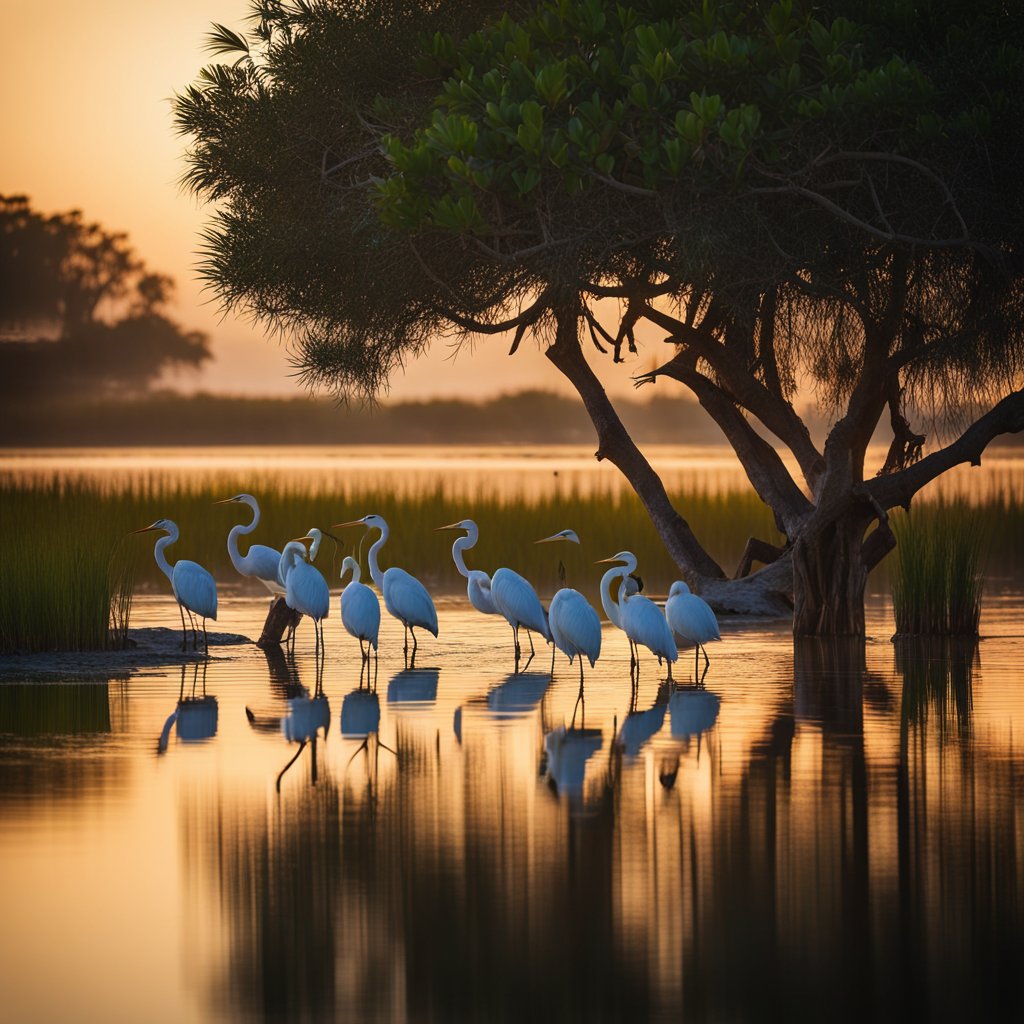
Have you ever found yourself longing for the rustle of feathers and the thrill of spotting a rare bird in its natural habitat?
Well, you're in for a treat at the J.N. "Ding" Darling National Wildlife Refuge in sunny Florida!
Nestled on Sanibel Island, this refuge isn't just another bird sanctuary.
It's a diverse ecosystem with lakes and the largest undeveloped mangrove ecosystem in the country.
Imagine sitting quietly by a lake, binoculars in hand, as a symphony of birds unfolds around you.
Here, you might catch a glimpse of elegant herons, curious egrets, or even a group of playful pelicans diving for their lunch.
Why is this place so special, you ask?
It's not just the spectacular migratory bird populations that make it a haven for bird watchers like yourself.
It's also the dedication to preserving the land's natural beauty, named in honor of conservationist Jay Norwood "Ding" Darling, who was instrumental in its founding.
But wait, there's more!
You can explore the refuge in different ways:
- Drive the Wildlife Drive: Open from 7:00 am, drive at your own pace.
- Hop on a Tram: Tours available on select days for an expert-guided experience.
- Bird Checklist: Keep track of your feathered friends with a convenient checklist.
Remember, your quiet observation plays a part in the conservation efforts, ensuring these beautiful creatures thrive for generations to come.
So, why wait?
Plan your visit, dust off your binoculars, and experience the wonders of the J.N. "Ding" Darling National Wildlife Refuge.
See you there!
Chincoteague National Wildlife Refuge (Virginia)
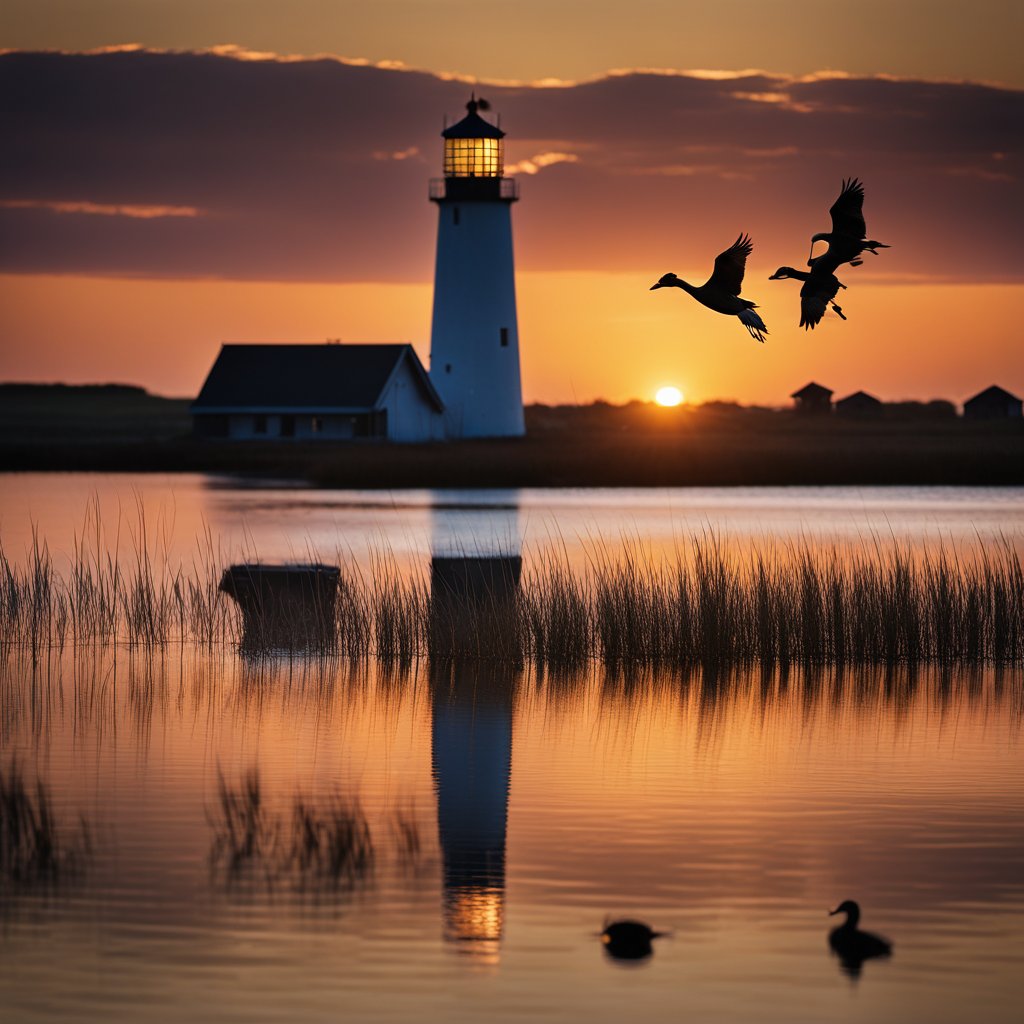
Have you ever found yourself dreaming of wandering through a serene coastal haven, binoculars in hand, in search of some of the most beautiful birds you could imagine?
Well, at the Chincoteague National Wildlife Refuge in Virginia, you can do just that.
Nestled on Assateague Island, this refuge is a prime spot for birdwatchers like you to spot an abundance of shorebirds, waterfowl, and raptors.
- Location: Assateague Island, Virginia
- Habitats: Coastal lagoons, marshes
- Birds to Watch For: Shorebirds, waterfowl, raptors
What Can You See?
Imagine the possibility of encountering majestic raptors soaring overhead or graceful shorebirds darting along the water's edge.
Picture tranquil marshes brimming with the vibrant life of waterfowl.
Yes, that's what awaits at Chincoteague.
You might even glimpse the famous Chincoteague ponies in the distance!
With the refuge being one of the most visited in the country, it's no secret that it's a favorite among bird enthusiasts and nature lovers alike.
Why is it so beloved?
Because it offers a peaceful retreat with an incredible variety of winged wonders to admire:
Seasonal Hours:
May through September: 5:00 AM - 10:00 PM
April & October: 6:00 AM - 8:00 PM
Plan Your Visit
Before you go, remember there's a $10 fee per vehicle.
Why not pack a picnic, bring your best camera, and make a day of it?
Whether you choose to meander by foot or cycle around, there are plenty of ways to immerse yourself in this birdwatcher's paradise.
And hey, if you're there at the right time, take advantage of the Wildlife Loop—a favorite trail that becomes available to cars after 3 pm.
Imagine the photos you could capture!
So, grab your binoculars, a trusty field guide, and your sense of adventure—Chincoteague National Wildlife Refuge awaits your discovery.
Are you ready to meet some feathered friends?
Great Salt Lake Audubon Society's Gillmor Sanctuary (Utah)

Ever wondered where a staggering number of shorebirds and waterfowl decide to take a pit stop during their migratory marathons?
Look no further than Utah's very own Gillmor Sanctuary!
Managed by the Audubon Society, this protected haven spans an impressive 3,597 acres along the southern shores of the Great Salt Lake.
Why do birds flock here?
It's simple: the sanctuary boasts a mix of wetlands and uplands that are just perfect for our feathered friends.
Whether they're the graceful American avocets, whirligigging phalaropes, or ducks of all sorts, they can't seem to resist the sanctuary's allure.
Did you know?
Between 1995 and 1996, Florence Gillmor, a local landowner, had a spark of vision.
She donated 1,319 acres to kickstart what would become this avian oasis, naming it after her father and uncle, Edward L. and Charles F.
Gillmor.
That's right, every bird you spot there is part of Florence's legacy!
Get involved: Feeling the pull to do more than just watch?
The sanctuary organizes volunteer workdays every spring and fall.
You get to enjoy up-close views of the sanctuary's inhabitants while teaming up with staff and local community members.
Think of it as nature's meet-and-greet!
So grab your binoculars and a sense of adventure, and make a beeline for the Great Salt Lake's Gillmor Sanctuary.
With open vistas, dynamic bird populations, and the salt lake breeze, you’re in for a chirp-tastic time!
Ready to become a part of birdwatching's best-kept secret?
Lake Mattamuskeet National Wildlife Refuge (North Carolina)
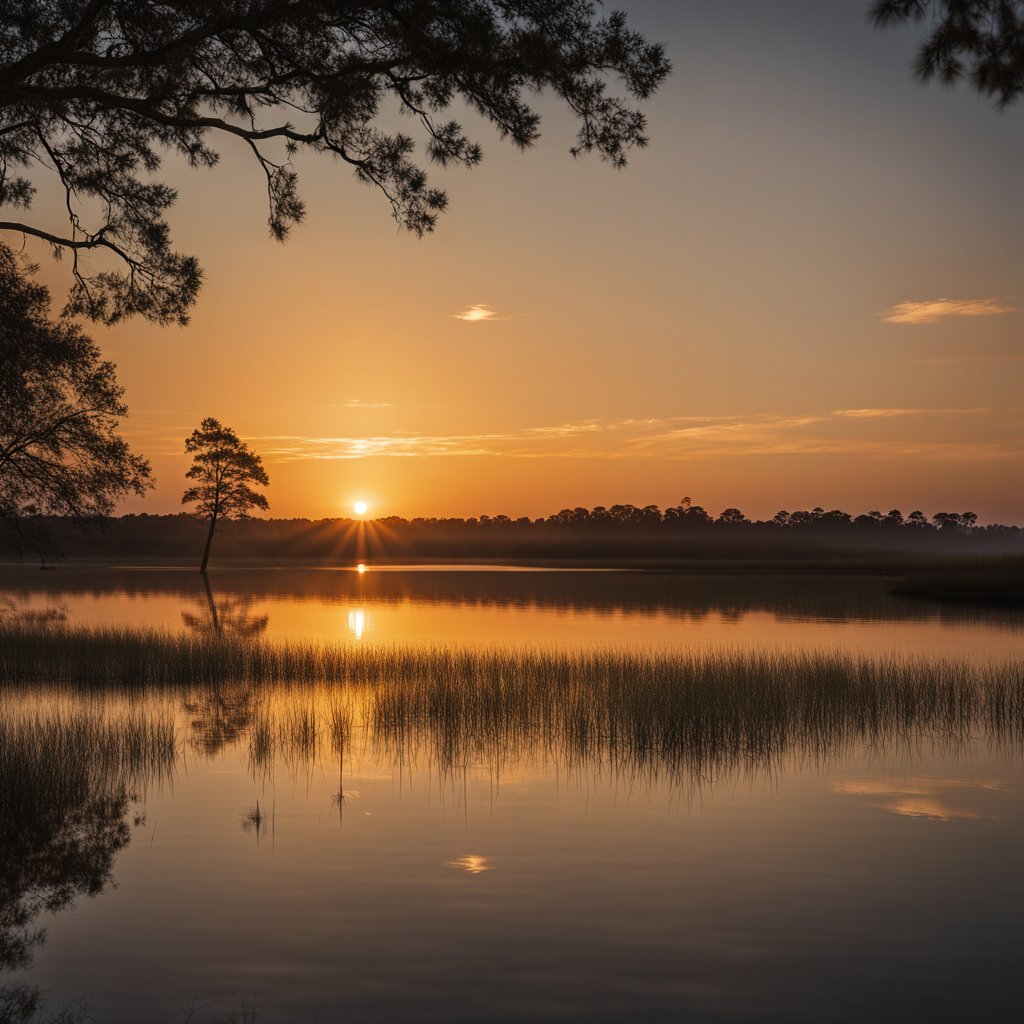
Have you ever wondered where an incredible array of migratory birds make their pit stops?
Well, look no further than Lake Mattamuskeet National Wildlife Refuge in North Carolina!
At the heart of the refuge lies the majestic Lake Mattamuskeet, sprawling across an impressive 40,000 acres.
Can you believe that it's the largest natural freshwater lake in the state?
Here's what you can find at Lake Mattamuskeet:
- Wintering Waterfowl: Home to hundreds of thousands of ducks, geese, and beautiful tundra swans.
- Birding Bonanza: A plethora of breeding songbirds set the backdrop for a symphony of tweets and chirps.
- Wildlife Wonders: Keep your eyes peeled for the elusive black bear or a sneaky bobcat.
Activities to Enjoy:
- Fishing: Fans of angling can enjoy sport fishing from March 1 through November 1.
- Hunting: Offers controlled hunting opportunities; don’t forget to check the regulations.
- Photography & Birding: Budding photographers and birders, ready your lenses!
Remember, the lake isn't just wide and vast; it's also pretty shallow, averaging only two to three feet in depth.
It spans 18 miles long and 7 miles wide, making it a haven for wildlife and a paradise for nature lovers like you.
So next time you're planning an outdoor adventure, why not consider the Lake Mattamuskeet National Wildlife Refuge?
Whether you're keen on catching a glimpse of feathered travelers, enjoy a bit of fishing, or simply want to revel in nature's beauty, this place is a treasure that's not to be missed.
Who knows, you might just capture that perfect shot of a tundra swan in flight or reel in the catch of the day!
Upper Mississippi River National Wildlife and Fish Refuge (Minnesota/Wisconsin/Iowa/Illinois)
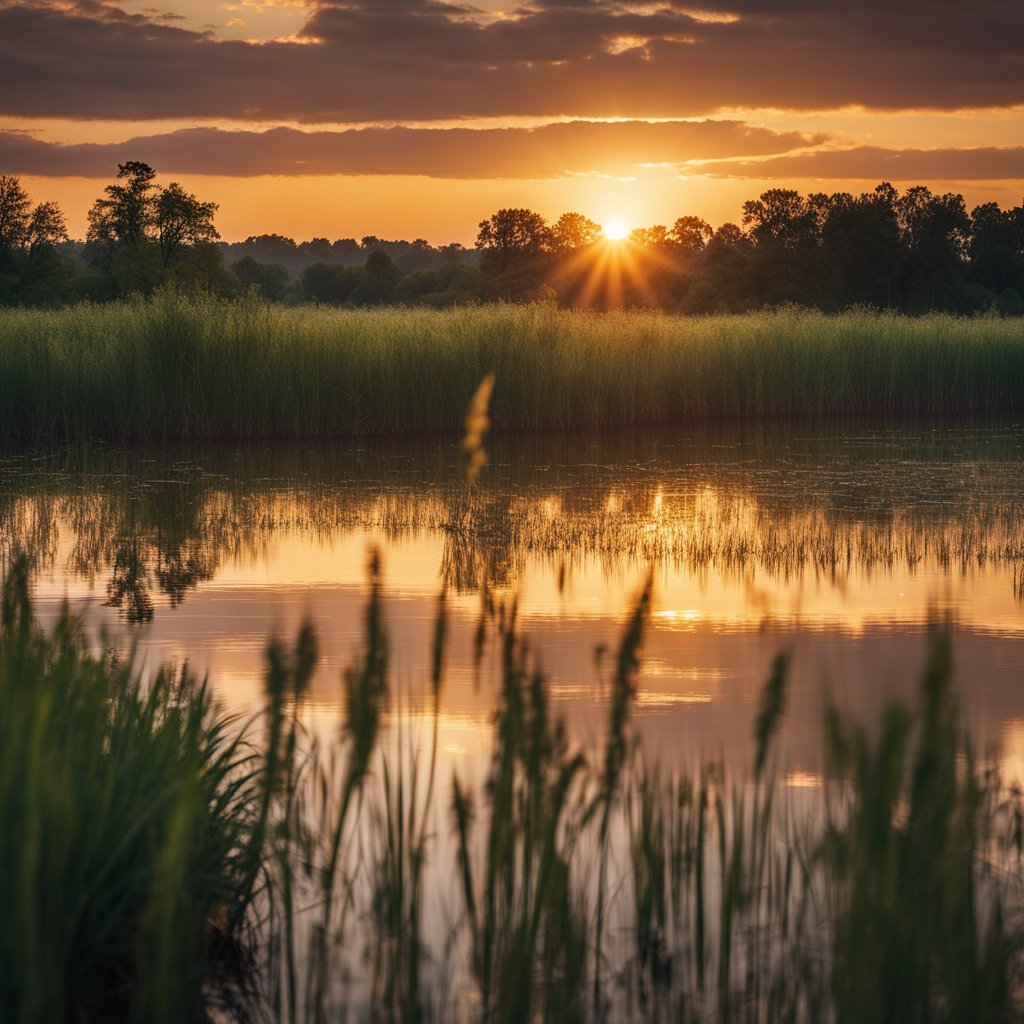
Hey there, fellow bird watcher!
Have you ever visited the Upper Mississippi River National Wildlife and Fish Refuge?
Stretching a remarkable 261 river miles and encompassing over 240,000 acres across four states - Minnesota, Wisconsin, Iowa, and Illinois - this refuge is nothing short of a birdwatcher's paradise.
Let's dive in—imagine cruising along the Mississippi River spotting the majestic bald eagle soaring above or discovering a variety of migratory waterfowl bobbing along the river's edge.
Pretty awesome, right?
What can you find here?
- A safe haven for migratory birds and wildlife
- A variety of habitats, including lakes and wetlands
- Over 3.7 million visits annually, showcasing its popularity for activities like hunting, fishing, and, of course, bird watching
Why is this place unique?
The refuge has been protecting our feathered friends and their habitats since 1924.
That's a whopping 100 years of conservation!
Plus, its position within the Driftless Area means you're getting a glimpse of North America that has remained untouched by glaciers for millions of years.
How's that for a history lesson?
So, pack your binoculars and get ready to explore the natural beauty.
Whether you're kayaking down the river or camping nearby, you're in for an unforgettable experience that'll have you coming back for more.
Who knows, you just might bump into another bird enthusiast—like me—along the way!
Klamath Basin National Wildlife Refuges (California/Oregon)
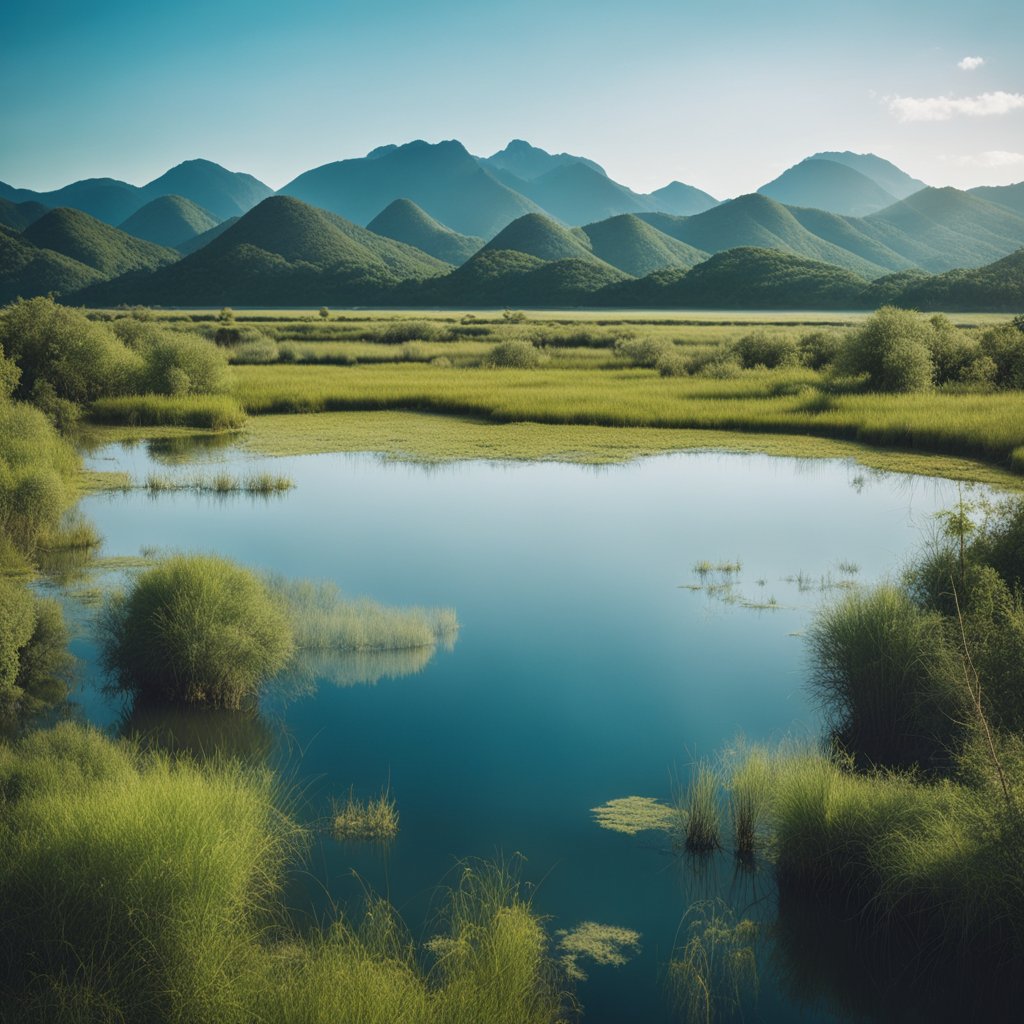
Have you ever found yourself dreaming of a place where the sky bursts with the wings of migratory birds?
Well, pack your binoculars, because the Klamath Basin National Wildlife Refuges are just that avian paradise!
Straddling the sunny states of California and Oregon, this complex is a patchwork quilt of marshes and lakes that burst with life.
It's a bit like nature's own airport, where winged travelers stop by to refuel.
- Established Date: April 3, 1928
- Founder: President Calvin Coolidge
- Total Area: Over 7,560 acres reserved
Who's flying in today?
You'll likely spy some poised raptors or flocks of waterfowl skimming across the water's surface.
Each refuge within the complex tends to roll out the red carpet for certain species, especially during migration seasons.
And it's not just birds; a range of wild animals call these refuges home.
What makes it special?
- Critical habitat for migratory birds
- Diversity: The complex consists of six unique refuges
- Duck Stamps: Your support for habitat conservation
- Visitor Center: Located at 4009 Hill Road, Tulelake, CA 96134
Ever wondered how you can help these birds?
It's simple: purchasing Duck Stamps goes a long way in supporting bird habitat conservation.
So you see, you can make a huge impact with a small gesture!
Don't just take my word for it.
The whispers of bird calls over the waters are an invitation to experience the ebb and flow of life in these sanctuaries.
Come witness how the Klamath Basin continues to breathe life into its visitors, feathered or not.
Who knows, you might just leave a bit lighter, with wings of your own.
Monte Vista National Wildlife Refuge (Colorado)

Isn't it amazing how a single place can be a convergence of so many bird species?
If you have a soft spot for avian observation, Monte Vista National Wildlife Refuge in Colorado is your kind of paradise.
Have you ever seen a majestic sandhill crane up close?
Well, here's your chance!
The refuge boasts 14,804 acres.
Imagine acres upon acres of wetlands, just teeming with life!
It's not only ducks and geese that call this place home, but an impressive array of winged wonders.
What's not to love about that?
- Bird Species? Hundreds! Including sandhill cranes, and trust me, they are a sight to behold during migration seasons.
- Location? Nestled in the picturesque San Luis Valley, where the pictures you'll snap are as breathtaking as the live experience.
But hey, it's not just about watching, it's also about the experience:
- Witness the grandeur of Bald Eagles and Red-tailed Hawks soaring above.
- Find joy in the melodies of small songbirds.
- Don't forget about the waterfowl - ever seen a teal or a pintail up close?
Birdwatching Growth: You're part of a trend; birdwatching is booming in Colorado!
Did you know that the refuge participates in prescribed fires?
It's all for the sake of rejuvenation, ensuring the habitat stays prime for its feathery inhabitants.
If you're curious, you might want to check out:
- Prescribed Fire Operations: Contact Dean Lee, (719) 589-4021 x1008, for the info on habitat management.
Bird lists, recent sightings, and even hotspots are all there for the eager birder.
So grab your binoculars, and let's go birdwatching.
Who knows what you might spot next!
Merritt Island National Wildlife Refuge (Florida)
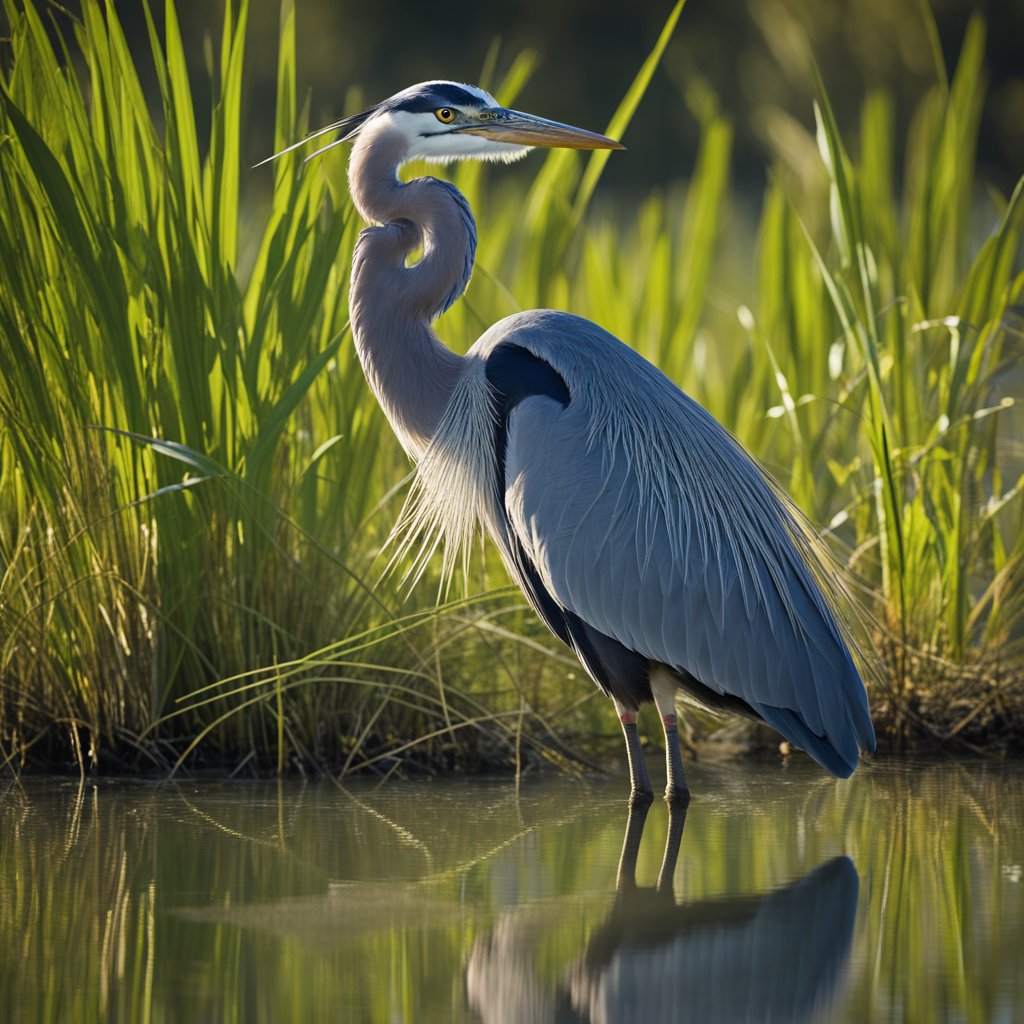
Ever wondered where you could spot a majestic Bald Eagle in flight or catch a glimpse of the vibrant Roseate Spoonbill?
Look no further than the Merritt Island National Wildlife Refuge in Florida!
Nestled along the coast, about 60 miles east of Orlando, this gem is not just for astronauts!
Let's talk numbers, shall we?
With 357 different bird species documented, it's a birder's paradise all year round.
During the winter, this place is like a waterfowl convention, with populations sometimes swelling to an impressive 100,000.
Is your camera ready for that?
Here's what's on the program:
- Bald Eagles: these regal birds have made the refuge a preferred nesting ground. Keep your eyes peeled for them!
- Brown Pelicans, Egrets, and Herons: these guys are practically the welcoming committee of the place.
- Rare Sightings: fancy seeing a Reddish Egret or a Mottled Duck? This is your chance!
The best part?
You're right next to the Kennedy Space Center, so you can add rockets to your list of things to see!
Merritt Island is a curious mix of space age and pristine nature.
Isn't that a quirky combo to tell your friends about?
So grab your binoculars, and don't miss out on a visit to this sanctuary where beauty, technology, and feathered friends thrive side by side.
Who knew space and spoonbills could be neighbors?
This is one out-of-this-world birding experience you don't want to miss out on!


